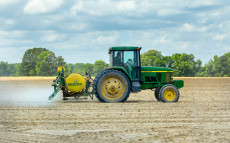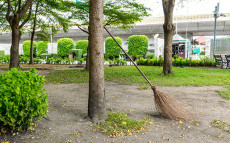- pathfindersAI
- Job Profile
Landscaping and Groundskeeping Workers
Summary
Landscaping and Groundskeeping Workers: A Vocation in Harmony with Nature
What They Do
Landscaping and Groundskeeping Workers play an indispensable role in shaping and maintaining the aesthetic and functional aspects of diverse outdoor spaces. These dedicated professionals create and nurture the landscapes that embellish parks, gardens, residential complexes, commercial properties, and public institutions. From planting flowers and trimming trees to laying sod and installing irrigation systems, these workers ensure that outdoor areas remain visually pleasing, safe, and environmentally sustainable. Their expertise intersects horticulture, environmental science, and artistic design, allowing them to convert ordinary plots into extraordinary verdant vistas.
Job Responsibilities
The responsibilities of Landscaping and Groundskeeping Workers are multi-faceted and involve a broad spectrum of tasks. Daily duties may include mowing lawns, pruning shrubs, and weeding gardens to maintain order and beauty. They may also be responsible for soil preparation, planting, and the care of plants, trees, and flowers. Seasonal responsibilities often include snow removal and leaf collection. Additionally, these workers handle the installation and maintenance of hardscape features such as walkways, retaining walls, and patios. They are also tasked with the operation and maintenance of lawn care equipment ranging from hand tools to heavy machinery. Integral to their role is the application of pesticides and fertilizers to promote plant health and sustainability. Furthermore, they engage in planning and executing landscape designs prepared by landscape architects, ensuring the vision materializes effectively and efficiently.
Essential Skills
The role of a Landscaping and Groundskeeping Worker demands a robust set of skills. Physical stamina and dexterity are essential due to the physically demanding nature of the job. A keen eye for detail and an appreciation for aesthetics aid in creating visually appealing landscapes. Knowledge of horticulture, including plant identification and care, is crucial. Mechanical aptitude is necessary for the maintenance and repair of landscaping equipment. Time management skills ensure that tasks are completed efficiently within given deadlines. Furthermore, good communication and teamwork abilities are important while working alongside landscape designers, architects, other groundskeepers, and clients.
Educational Pathways
Entering the field of Landscaping and Groundskeeping often requires a combination of formal education and hands-on experience. While a high school diploma or equivalent is typically the minimum qualification, many opt to pursue postsecondary education in horticulture, landscape design, or environmental science. Certificate programs and associate degrees offered by community colleges and technical schools provide targeted education in plant care, soil science, pest management, and landscape management. Apprenticeships and internships offer practical experience, supplemented by on-the-job training provided by employers. Certifications, such as those offered by the Professional Grounds Management Society (PGMS) or the National Association of Landscape Professionals (NALP), although not mandatory, can enhance career prospects and professional credibility.
Career Prospects
The demand for Landscaping and Groundskeeping Workers remains steady, driven by the constant need for the maintenance and beautification of green spaces. With growing emphasis on environmental sustainability and the proliferation of green spaces in urban environments, prospects within this domain are promising. Entry-level positions typically provide ample opportunities for advancement to supervisory roles, project management, or specialized horticulture positions. Entrepreneurial individuals may also consider establishing their own landscaping businesses. Furthermore, ongoing developments in green technologies and sustainable practices present new opportunities for those willing to adapt and expand their skill sets.
Conclusion
The vocation of a Landscaping and Groundskeeping Worker is one of gratifying labor melded with artistic and scientific acumen. These professionals play an indispensable role in the cultivation and maintenance of our environment, ensuring that both private and public spaces provide beauty, function, and ecological balance. Through a blend of educational pathways and practical experience, aspiring landscapers and groundskeepers can lay the groundwork for a diverse and rewarding career. The field not only promises steady employment and opportunities for advancement but also the personal satisfaction of contributing to the enhancement and preservation of our natural surroundings.
Video
Compensation
| State | Median Salary | Median Hourly | Positions |
|---|---|---|---|
| AL | 33,820 | 16.26 | 11,450 |
| AK | 44,570 | 21.43 | 920 |
| AZ | 37,090 | 17.83 | 20,720 |
| AR | 31,550 | 15.17 | 6,470 |
| CA | 40,800 | 19.62 | 105,790 |
| CO | 44,210 | 21.26 | 22,380 |
| CT | 44,710 | 21.50 | 13,550 |
| DE | 36,710 | 17.65 | 3,570 |
| DC | 46,320 | 22.27 | 530 |
| FL | 35,460 | 17.05 | 82,770 |
| GA | 35,760 | 17.19 | 21,660 |
| HI | 42,590 | 20.47 | 6,870 |
| ID | 38,130 | 18.33 | 7,300 |
| IL | 43,080 | 20.71 | 37,290 |
| IN | 36,460 | 17.53 | 18,840 |
| IA | 37,390 | 17.98 | 7,200 |
| KS | 37,510 | 18.04 | 8,120 |
| KY | 34,980 | 16.82 | 9,460 |
| LA | 30,020 | 14.43 | 8,180 |
| ME | 40,520 | 19.48 | 5,270 |
| MD | 38,460 | 18.49 | 17,470 |
| MA | 46,600 | 22.41 | 21,460 |
| MI | 36,630 | 17.61 | 30,100 |
| MN | 43,640 | 20.98 | 16,880 |
| MS | 29,730 | 14.29 | 5,360 |
| MO | 36,540 | 17.57 | 16,860 |
| MT | 38,420 | 18.47 | 3,550 |
| NE | 37,160 | 17.87 | 6,040 |
| NV | 36,490 | 17.54 | 9,250 |
| NH | 41,180 | 19.80 | 5,830 |
| NJ | 41,790 | 20.09 | 29,270 |
| NM | 34,800 | 16.73 | 4,590 |
| NY | 39,490 | 18.99 | 49,160 |
| NC | 35,680 | 17.15 | 32,210 |
| ND | 39,470 | 18.98 | 2,200 |
| OH | 36,100 | 17.36 | 34,160 |
| OK | 34,170 | 16.43 | 9,420 |
| OR | 41,220 | 19.82 | 11,160 |
| PA | 36,400 | 17.50 | 37,010 |
| RI | 44,960 | 21.62 | 4,480 |
| SC | 35,120 | 16.89 | 15,990 |
| SD | 30,830 | 14.82 | 2,640 |
| TN | 36,110 | 17.36 | 15,350 |
| TX | 35,600 | 17.11 | 68,500 |
| UT | 38,430 | 18.48 | 11,220 |
| VT | 44,580 | 21.43 | 2,710 |
| VA | 37,010 | 17.79 | 24,660 |
| WA | 45,770 | 22.01 | 21,890 |
| WV | 29,010 | 13.95 | 4,090 |
| WI | 37,890 | 18.21 | 16,550 |
| WY | 36,970 | 17.77 | 1,580 |
Similar Occupations
In this area you will find other occupations that are close to the one you were viewing in tasks, knowledge and work environment. If the primary job profile you are viewing isn't quite to your liking, take a look around and see what else is available.
Basic and Premium Accounts have more alternative occupations available than the Free account.

Agricultural Equipment Operators - 45-2091.00
Agricultural Equipment Operators are responsible for driving and controlling farm equipment such as tractors, harvesters, and irrigation machines to plant, cultivate, and harvest crops. They perform routine maintenance on machinery, ensuring it functions efficiently to maximize farm productivity.
-
$39,690/yr
Median Pay -
28,910
Number of Jobs

Fallers - 45-4021.00
A faller is a skilled professional responsible for felling trees in forests, typically using chainsaws or other specialized equipment to cut down timber while ensuring safety and precision. Their work involves assessing tree behaviors, planning cutting angles, and minimizing environmental impact during the logging process.
-
$53,170/yr
Median Pay -
4,800
Number of Jobs